How To Make LED Lights Brighter: 14 Brightness Boosters November 6, 2023 – Posted in: Tutorials
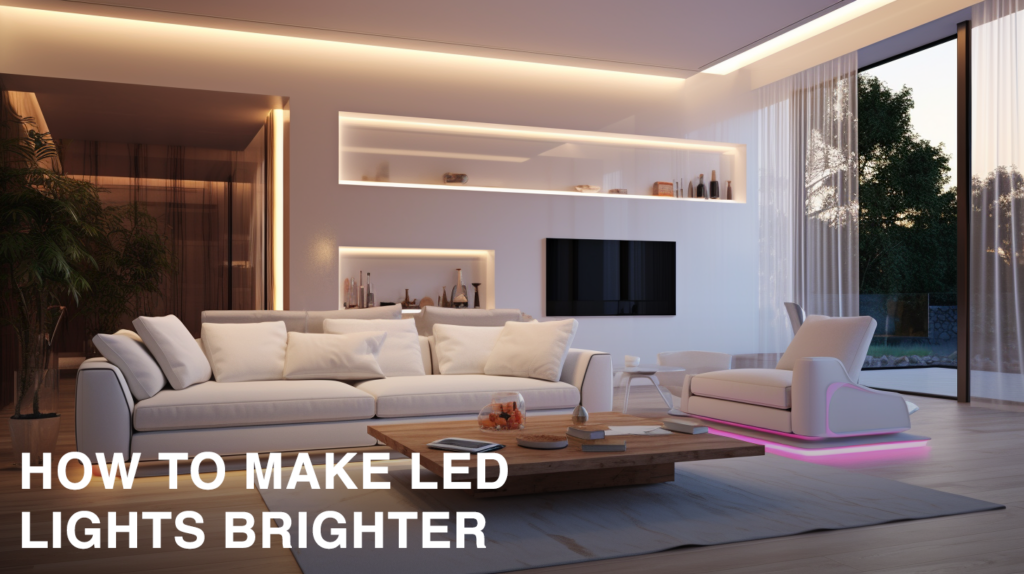
Table of Contents
LED lights can brilliantly brighten up your space, but what’s the best course of action when they start to lose their glow? It’s a common situation – wrestling with dimly lit rooms and pondering how to recapture that once vibrant brightness.
LED lights are renowned for their energy efficiency, yet over time you may notice a drop in their intensity – typically due to higher ambient temperatures or lackluster maintenance.
So the question is: how can we re-energize our LEDs’ brightness? Our thorough guide will unlock 14 effective strategies for amplifying the brightness of the LED lights and hopefully helping you increase LED brightness.
Key Points
- More LEDs can mean more light. Use many bulbs but spread them out. Also, make sure they get just enough power.
- Cleaning your lights helps a lot. Dirt on the LED or diffuser can block light and make it appear dimmer.
- Using high color temperature and reflectors boosts brightness. These changes help light shine more brightly in your space.
- Short wires or loose connections can be bad for the bulb’s brightness over time. Check that all parts are well – fitted to keep your LED lights in tip-top shape.
- Keeping LEDs cool also helps their glow last longer since heat can cause damage over time.
- Light paint colors bounce back more light which makes a room look brighter.
- Make use of single color white LED strips as they give off more lumens compared to RGB strips set to white.
Why LED Lights Lose Brightness
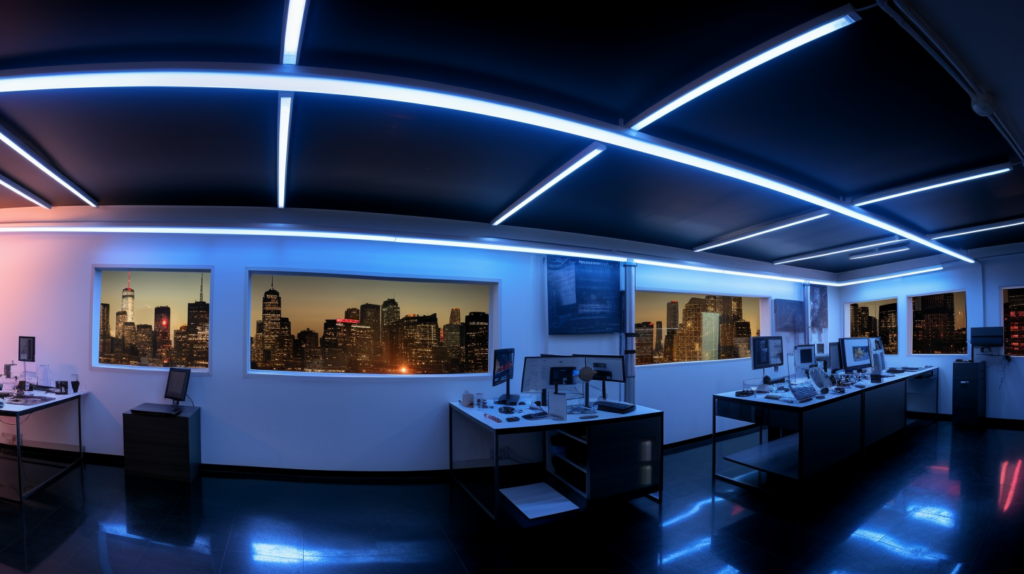
LED lights may lose their brightness over time due to various factors. Excessive heat can lead to a decline in luminosity, as LEDs are sensitive to temperature changes. The natural lifespan of the LED also plays a part – as the bulb ages, its light output decreases.
How Temperature Affects Lighting

High heat can harm LED lights. It can cut their life short and make them less bright. They work best in cool areas therefor we need to keep them out of the heat so they will last longer.
Cool temperatures help LEDs perform best over time.
Lifespan Of Light Fixtures
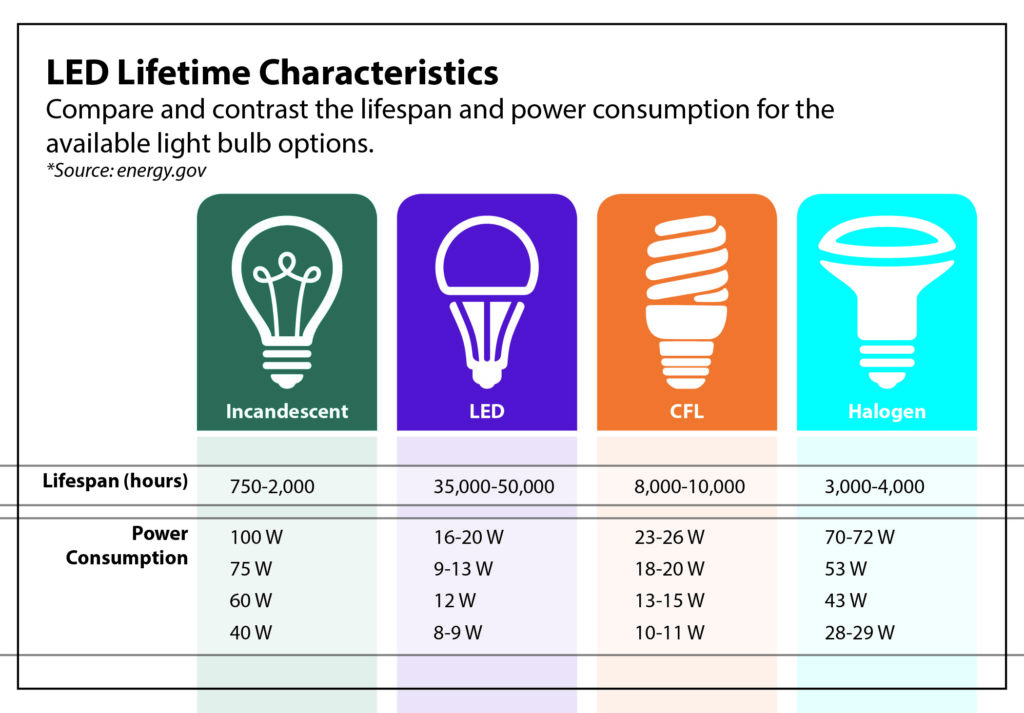
LED lights are designed to last for up to 50,000 hours or more in ideal environments. This is much longer than CFLs or halogen bulbs. But over time, they lose brightness and don’t shine as bright as before.
Several things affect the lifespan of LED lights:
- Heat makes LEDs less bright faster.
- Too much power or voltage makes them die sooner.
- Poor servicing can harm LEDs too and make their life shorter.
- Bad wire connections are a common cause of loss in brightness over time.
Poor Maintenance
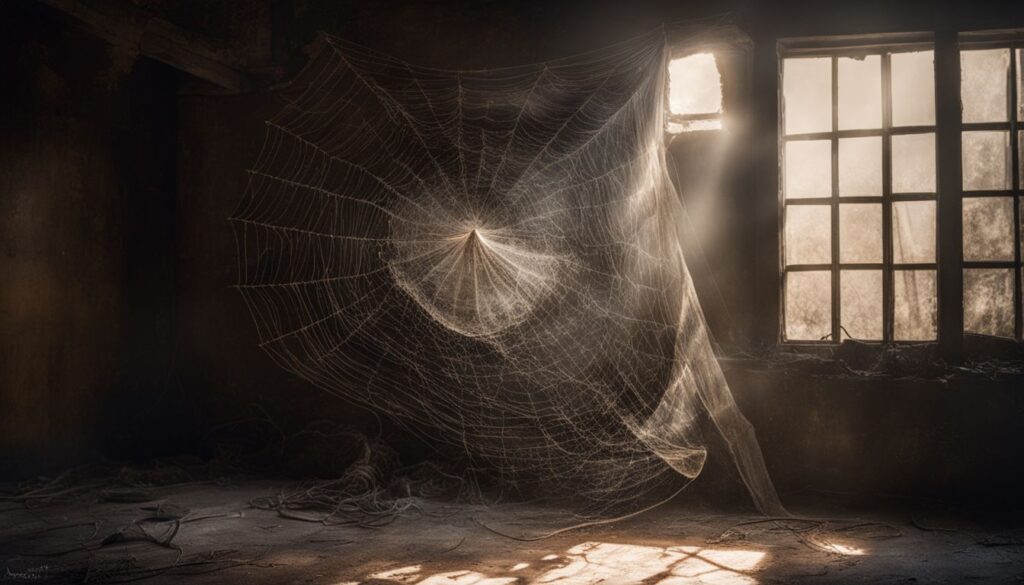
Keeping LED lights clean is important. If dirt builds up, it can block light and make the LED seem less bright. You must wipe your fixtures and diffusers often to stop dust from settling on them. A dirty light source will not shine as brightly as a clean one.
Also, if you don’t keep the space around the power supply clean, it can cause it to overheat from poor airflow. This will cause the driver fail faster as well.
Bad wire connections
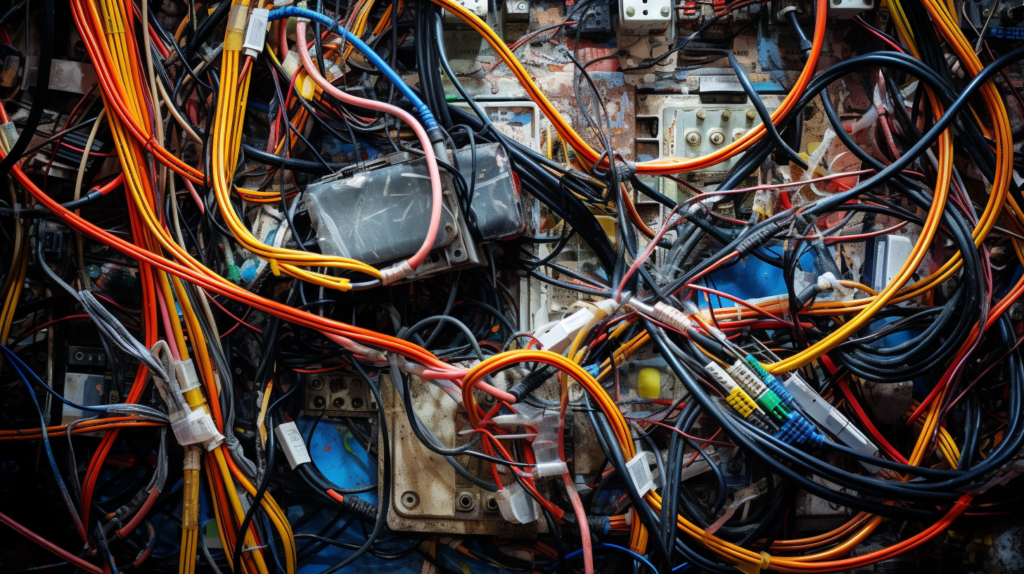
Loose or poor wire connections can dim or make your LED lights flicker. They can even cause them to stop working altogether. It’s like when you try to hold hands and someone lets go, the connection is lost.
This happens in LEDs too! If wires disconnect, they break the power path that makes LEDs light up. So, we must make sure wires are tight and well-connected for our LED lights to shine their best!
How To Make LED Lights Brighter
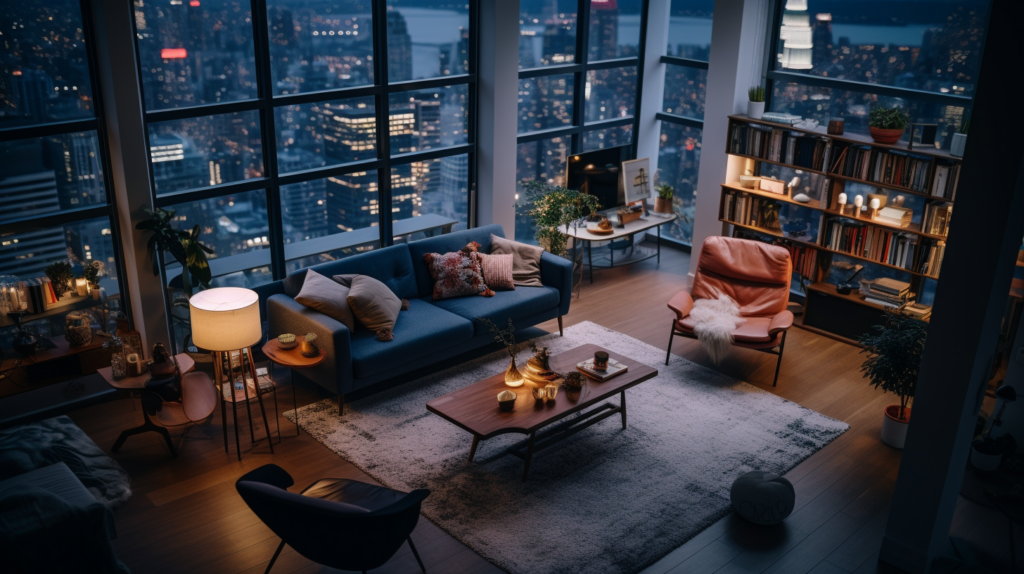
Discover simple yet effective ways to boost your LED light brightness. From increasing the number of LEDs in parallel and high-color temperature bulbs, to using reflectors and magnifiers — there’s an array of methods waiting for you! Ready to turn up the glow on your lights? Let’s dive in.
Utilize more LEDs in parallel to amplify brightness
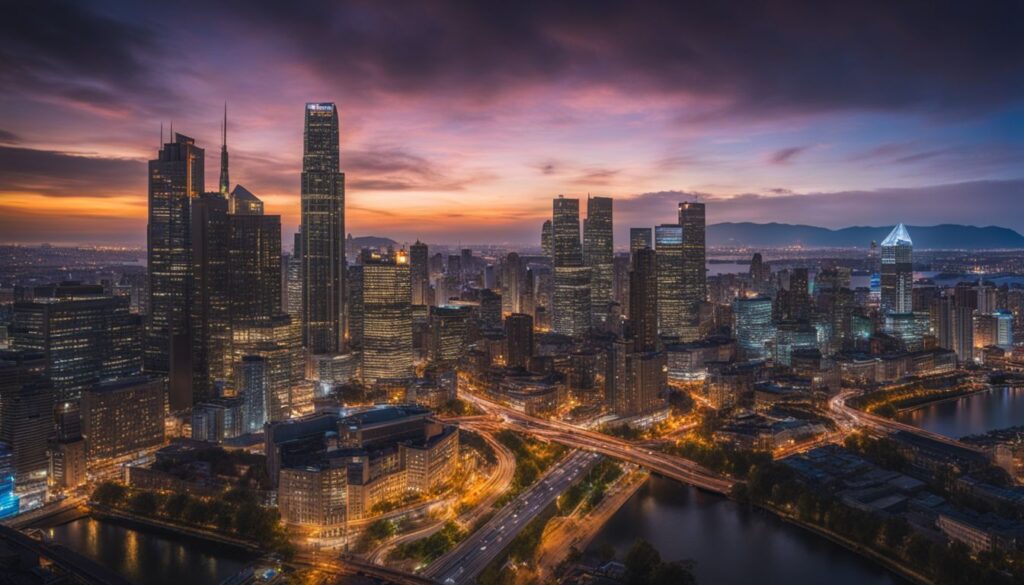
Making your LED lights brighter can be as simple as using more LEDs in a setup. Here’s how:
- Add More LEDs: More diodes will emit more light, increasing the number of lumens overall.
- Balance It Out: Too many LEDs in one place may decrease brightness. Spread them out equally while maintaining good coverage.
- Keep Efficiency in Mind: LEDs work best at low current levels. Try not to blast them with too much voltage or it could lessen their luminous output and lifespan.
- Team Up With Others: Combine multiple LED strips or bulbs for added brilliance, but don’t overcrowd.
Use pulse-width modulation

We can get brighter LED lights with pulse-width modulation (PWM). The PWM method changes how long an LED stays on and off. This can control the light it gives out. We often use this to change the brightness of an LEDs, but we can also use it to increase its brightness!
PWM is a technique used to adjust both the apparent and actual brightness of LED lights. It works by rapidly switching the LED’s power on and off like frames in a video, ensuring that there’s no noticeable flicker to the human eye.
The best part is you don’t even need to use any extra energy!
Switch to a higher color temperature

Going for a higher color temperature can make LED lights appear more vivid. The warmth or coolness of the light is measured in Kelvin (K). Lower numbers mean warmer, yellower light. Higher numbers give cooler, bluer light.
Switch to LED bulbs with a color temperature above 5000K for a brighter, whiter glow. These are ideal for areas requiring intense illumination such as a home office, cool white LEDs will make your space appear vibrant and clear with a simple upgrade!
Remove the diffuser
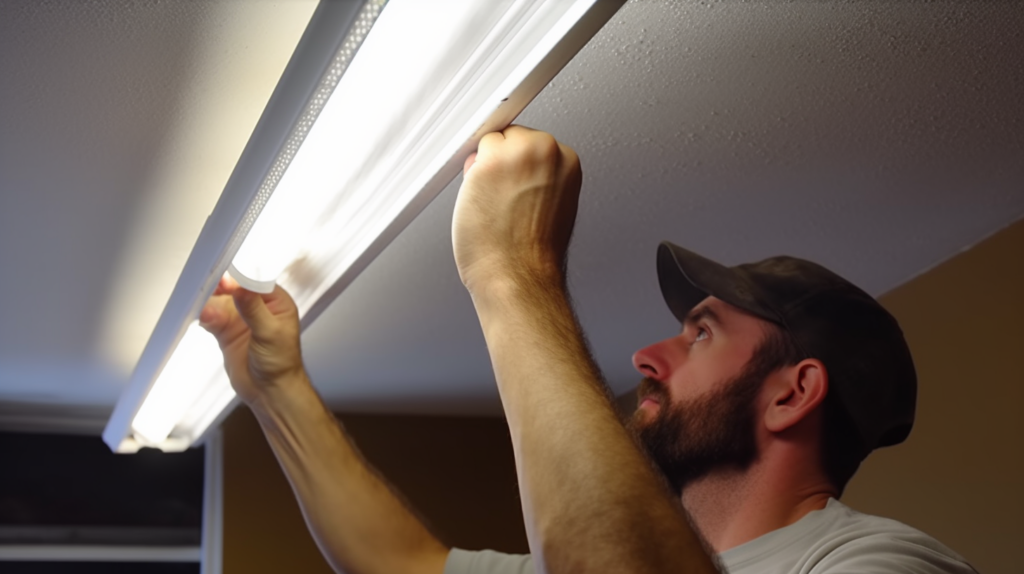
The diffuser on LED fixtures can dim the light by as much as 60% depending on the type. If you want your LED lights to be brighter, one option is to just take it off. This part is often plastic or glass and covers the bulb. It spreads out the light so it’s not too harsh.
But taking it away makes increases the lumens, making your room look brighter. Just unscrew or slide off this part with care, then enjoy your new bright light!
Use a magnifier or focused lens

We can also boost the brightness of LEDs with a magnifier lens screen. This is a cool trick! A magnifier lens focuses the light in one direction. It makes your LED beam narrower and stronger. An example of this is portable LED flashlights.
You can get different types of magnifiers, like bar or dome ones online given that for fixture supports it.
For example, our seamless office linear lighting has different lens options to focus lights depending on customer needs.
Choose LED lights with high luminous efficiency
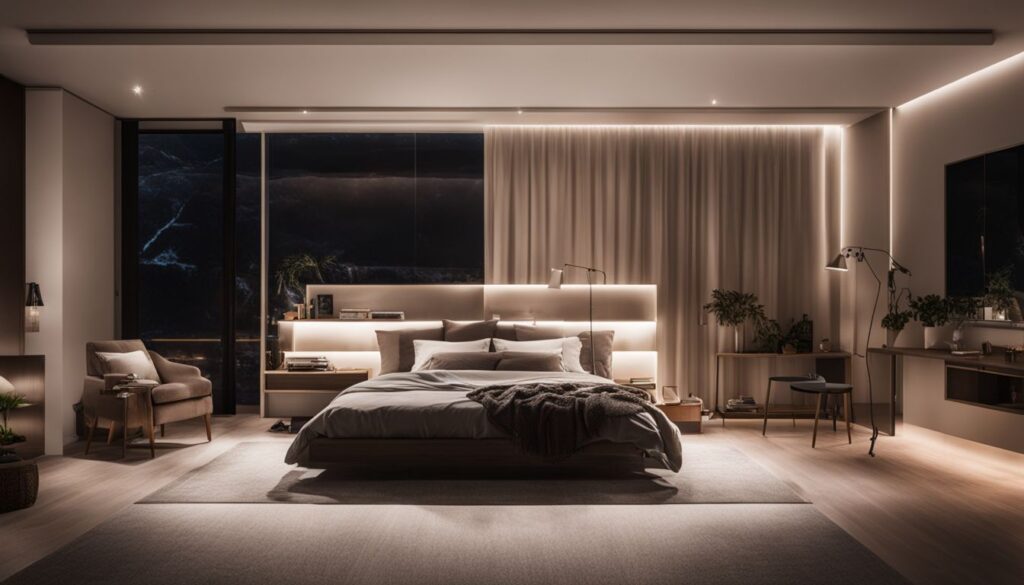
We should always pick LED fixtures that have high luminous efficiency. These are the best for saving energy and also give off more light per watt. The lumen rating of an LED bulb tells us how bright it will be.
Higher ratings mean a more intense light. Some top quality brands make LED bulbs with lots of lumens but use less energy. This means we can get a more powerful light without having to pay more for our power bill!
Install reflectors to focus and increase the intensity of the light
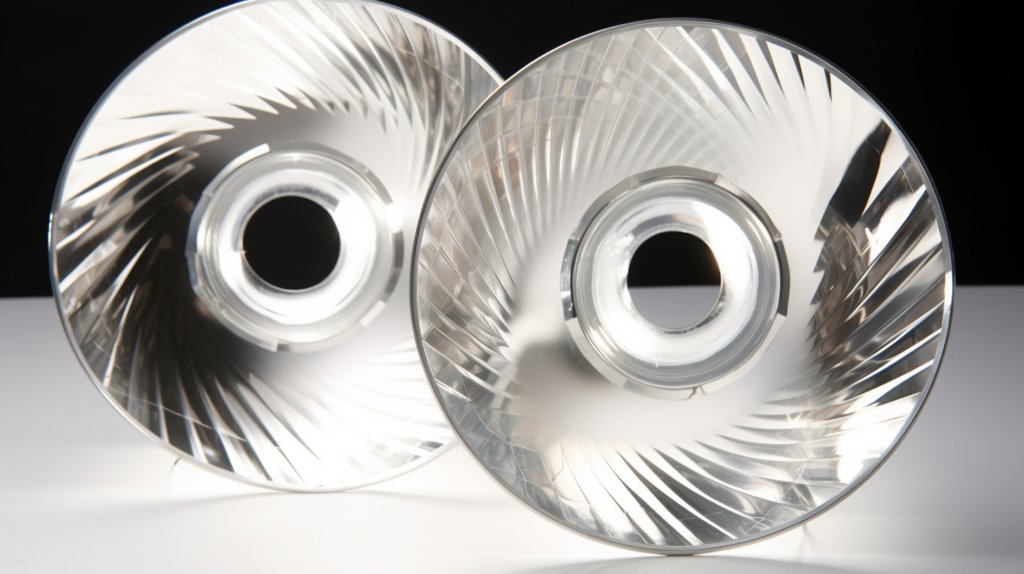
Let’s make our LED lights glow brighter. Here are ways to use reflectors for a strong light:
- Pick up a reflector that fits your light bulb’s size and type.
- Place the reflector behind the LED light bulb.
- The reflector helps gather all the light in one path.
- This boost makes the LED light look brighter.
- You can adjust the reflector for more focus on desired areas.
- The best part is, it does not need any extra energy!
- Always make sure your reflector is clean for better performance.
Use lighter paint for walls and surfaces to reflect more light
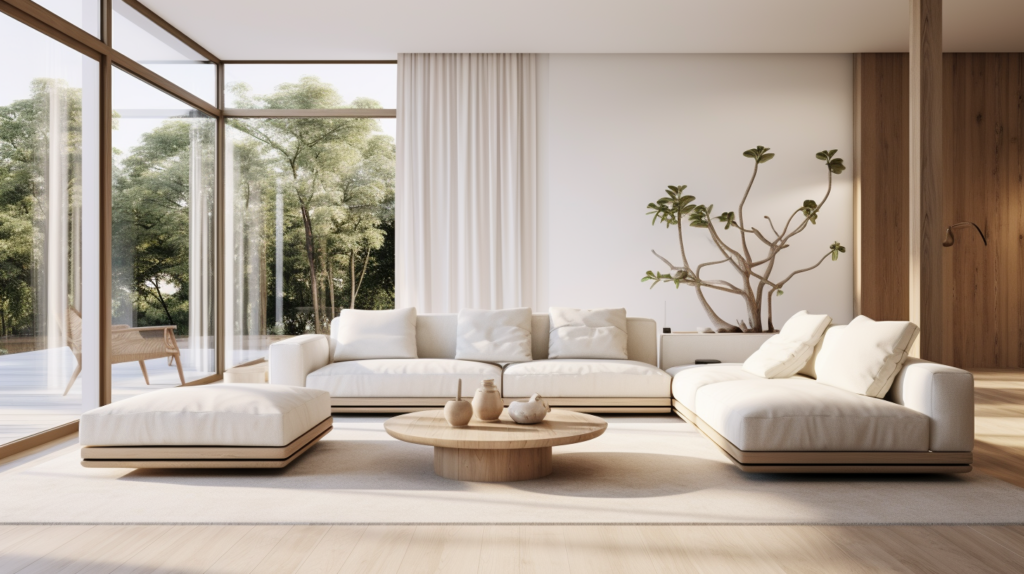
Lighter paint can make a big change in your room. It helps the LED lights do their job better. Take a look at your walls and surfaces. Are they dark or light? Dark colors eat up light while bright colors bounce it back.
Paint walls with lighter shades to get more shine from your LEDs. Light colors like white, cream or soft pastels work best for this trick. They mirror the light back into the room instead of taking it in.
The result? You get a higher amount of light and fresher looking space without adding extra fixtures! Now that’s smart design and great style rolled into one easy step.
Tips for Maintaining Bright LED Lights

Keep your LED lights at their brightest by enhancing circuit design, controlling ambient temperature, regularly cleaning the lenses and ensuring proper spacing between the lights.
Improve Circuit Design

Let’s work on the wiring of our LED lights. A neat and safe circuit design can aid in keeping LEDs bright. Use quality wires for better power flow from the source to your LED lamps.
Check each connection point for any loose wires and correct them right away. Make sure all parts are well-fitted, nothing should be left hanging or out of place. For more light, spread out the layout of multiple LEDs instead of bunching them together.
Improve Ambient Temperature: Operate LEDs in a cooler environment
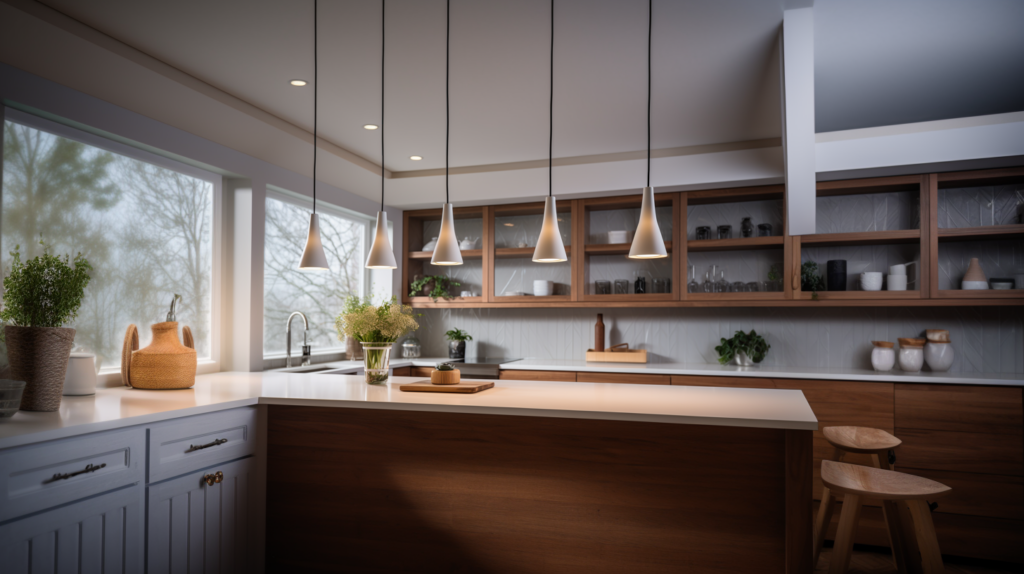
LED chips love the cold and work best in a cool setting. When it’s hot, they can lose brightness or stop working sooner than expected. For long-lasting and bright LED lights, keep them in a cool place.
This way, heat sinks found in LEDs can do their job well by taking away unwanted heat. With cooler temperature, your LEDs will shine brighter and have a longer life to light up your home beautifully!
Clean Surfaces: Regularly clean LED lenses
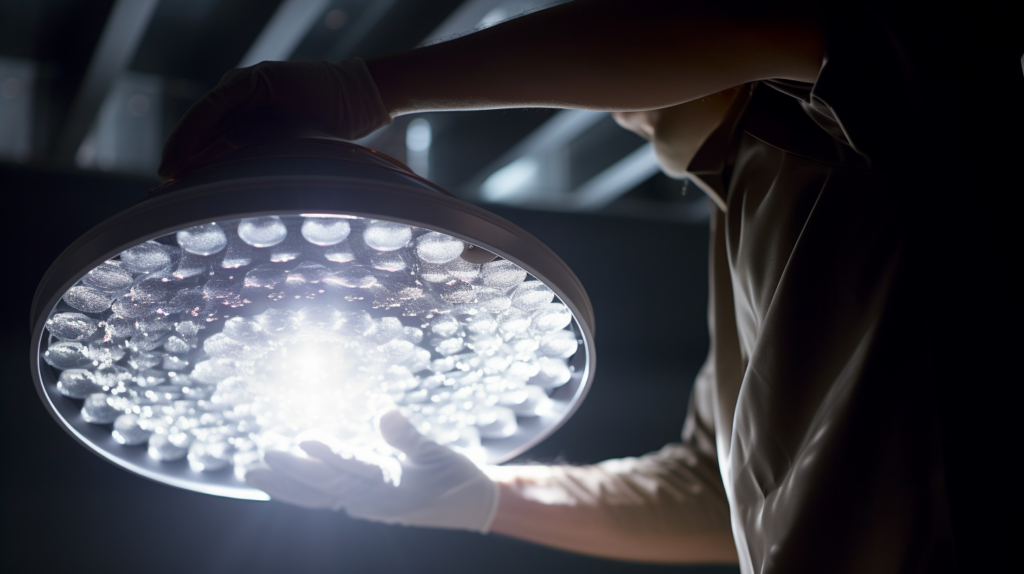
Keeping your LED lights clean is a big part of making them shine brightly. Here’s how you can do this:
- Make sure to clean your LED lenses often. This stops dust and dirt from covering the light.
- Use Isopropyl or rubbing alcohol for cleaning (only for the lens, not the finish). It removes the dirt without hurting the LED fixture.
- Always use soft items like a microfiber cloth for cleaning. They don’t scratch the light fixture.
- Clean glass covers on LEDs with window cleaner or hand wipes.
- Keep an eye out for smudges on the LEDs! Don’t let them block the light.
Proper spacing between lights

We should space our lights right because this makes sure we get bright and even lighting all across the room. The general rule is to have 1.5 times the ceiling’s height between each LED light.
For example, if we have a six-inch light and an eight-foot-tall ceiling, there should be 12 feet of space in between each light.
Now let’s talk about shadows because nobody likes them in their home. To keep them away with our LED pot lights, divide the ceiling height by two to find out how far apart your lights need to be from one another.
For those who own warehouses or big spaces, it’s a slightly different ball game but don’t worry! If your warehouse has a 15-feet high roof for example, make sure you place your LED warehouse lights around 12-15 feet apart for optimal brightness.
Bedrooms on the other hand are places where everyone needs good lighting especially after dark. So keep things nice and lit by putting at least three feet of distance between can lights and setting them around two feet away from walls.
Choose single color white LED strips

For higher lumens, we can go for single color white LED strips. These strips give off a bright light that is perfect for our homes. They are better than RGB strip lights which cannot make true white light resulting in a dimmer environment overall.
We also get to control the brightness of these strips for optimal lighting levels. Using these white LED strips, we can make any room feel both well-lit and brighter than standard RGB strips.
Use a high-quality power supply to ensure stable voltage and current
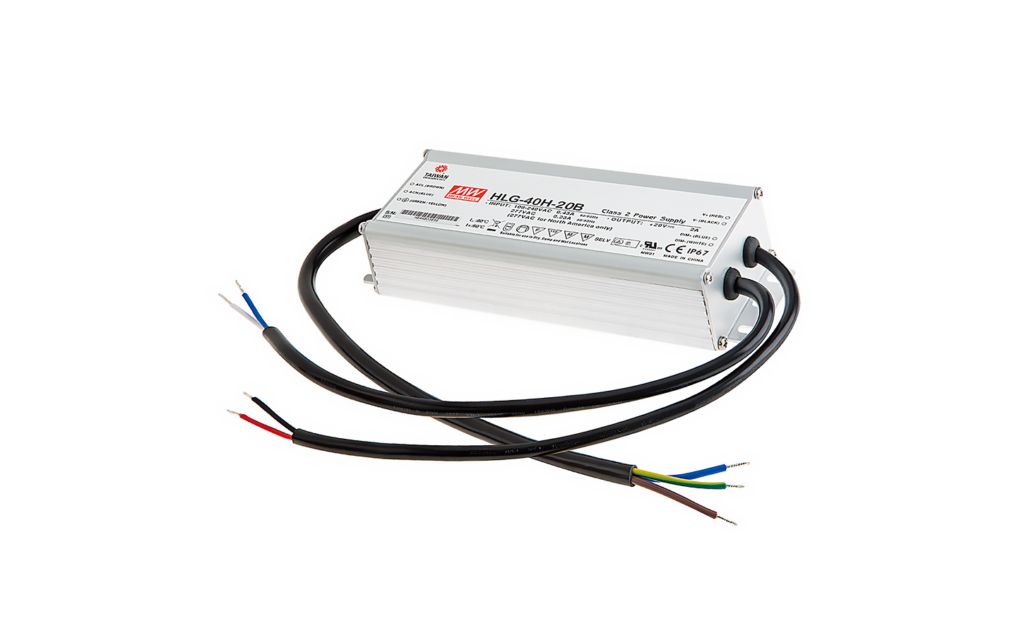
Since we sure do want our fixtures to shine bright, let’s talk about how a high-quality power supply can help. It ensures that the voltage and current are stable. Picture it like a strong heart pumping blood in your body, but here, it’s pumping energy to your light-emitting diodes.
A solid power supply helps bulbs work flawlessly. It can be the deciding factor for if your lights flicker or not. Plus, it keeps them safe from sudden changes in power flow. So go for top-grade stuff such as Meanwell (which many of our own fixtures use) when buying one! Make sure you check its voltage needs and output ability before buying.
Frequently Asked Questions – How To Make LED Lights Brighter
How can I make LED lights brighter?
To make LEDs brighter, adjust the brightness by increasing the amount of current or supplying a higher voltage to an LED. Although LED lights are underpowered by design, many have leeway for extra applied voltage. We recommend consulting an electrician before going down this route.
What tools do I need to increase the brightness of an LED?
You can use a resistor or a variable resistor (such as a potentiometer) in series with the LED to limit or adjust the current, thereby controlling its brightness. Additionally, a microcontroller can be employed to vary the perceived brightness of the LED through techniques like pulse width modulation (PWM), but it wouldn’t be placed directly in series with the LED for this purpose.
Can more light be harmful to my LEDs?
Yes, too much current will increase power consumption and may shorten the lifespan of your LEDs as they tend to degrade faster due to high brightness output.
How can electrical engineering knowledge help me brighten my led strip lights?
Understanding forward voltage from an LED specification sheet helps you give correct voltage to LEDs and avoid underpowering them which makes them less bright.
Does changing bulb type affect my lighting fixture’s brightness level?
Different bulbs like incandescent bulb or high-power led have different lumen outputs so changing bulbs could change total light emitted by fixtures affecting their brightness level.
Does focusing light make it brighter?
If you focus light instead of letting it spread in all directions, it doesn’t actually increase its overall amount but appears brighter due to concentrated light glare.
I have been the project manager for Modern.Place since early 2016, spending three of those years working overseas on the manufacturing & procurement side of the LED lighting industry. Constantly learning and passing on knowledge to others while excited for what the lighting industry will involve into next.


2 Comments
Larry Gilek February 05, 2024 - 15:12
For no apparent reason, recently my wall switch to my closet led light will only illuminate half the original brightness. Why? Where should i start ?
Vitaliy February 10, 2024 - 13:50 – In reply to: Larry Gilek
A sudden change in brightness can be caused by several reasons. It could be LED’s burning out inside (especially when there is 2 rows of LED’s inside), a change in voltage (sometimes caused by a dimmer) or LED driver starting to fail.